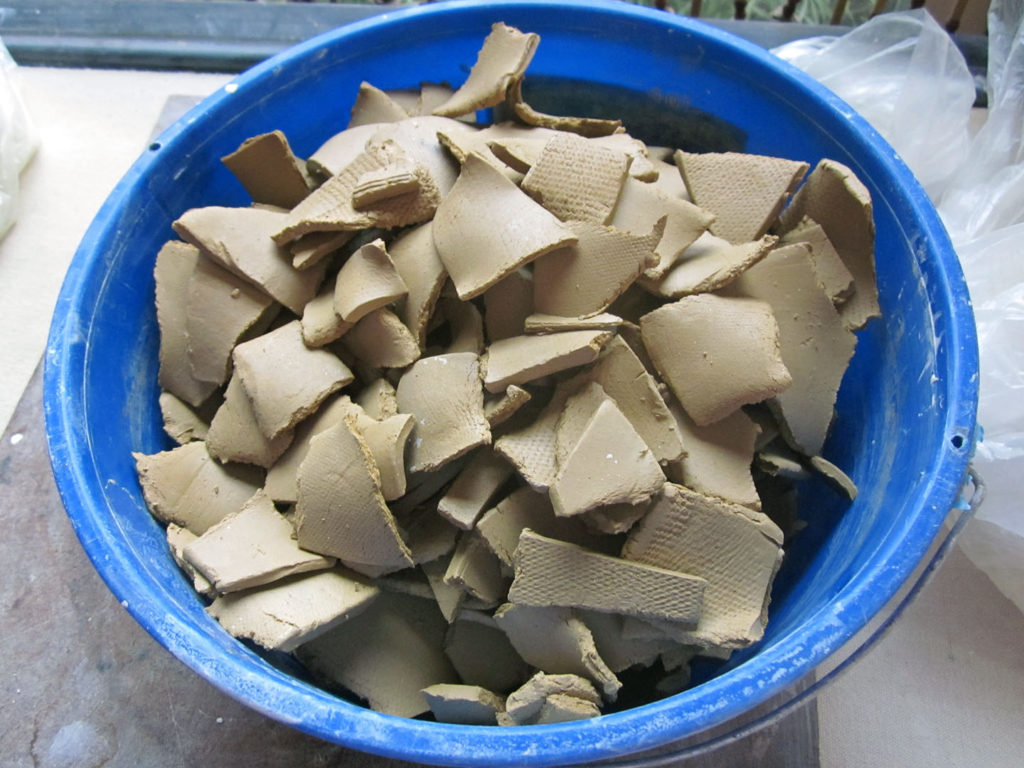
The Summer Re-Run Blog Posts are running down. This might be the last one, but it’s a goodie; one where the comments are probably more interesting than the post itself. Originally published September 26, 2012, it speaks to a grown-up awakening regarding resources and costs. And while this is still a great method, I no longer work this way and my clay scraps have been reduced to near ZERO. I will let you have fun reading about this small scale reclaiming method (and be sure to peruse the comments!) and then, in the sign-off, I will tell you what I do now…Enjoy!
So, how is it that I didn’t learn this early on in my clay career? And, even curiouser, once I did learn it, why did I not practice it until 2012? It was clearly due to a perfect storm of economics and sloth, involving
• A very handy and dirt-cheap (pun intended!) source for clay
• An all-too-convenient method of dumping all scraps into a group recycling process
• A strong streak of fastidiously-fed laziness cloaked in an utter lack of interest
I had no compelling reason to deal with my scraps. Being a slow-working hand-builder, I also just don’t create the massive leftovers like those wheel-throwing potters do, therefore I was not especially forced to deal with them. The scraps easily disappeared and all I had to do was open a nice fresh bag of just-right clay instead. It was that way for a decade.
In the past year, however, compelling reasons and needs to deal with leftovers have come to town:
• I pay retail for my clay now.
• It’s a hassle to get all those heavy buckets of dried chunks over to the college to feed to their recycle stream, and they take up a lot of room while they wait. (Plus the dog will eat them if left uncovered at his nose level!)
• I got curious about how much more work I could get out of a bag of clay if I did this.
Let’s take a look at what’s involved.
As I work, I toss my scraps into a bucket. When it’s full, I chunk them up into even-ish pieces, as in the photo up top.
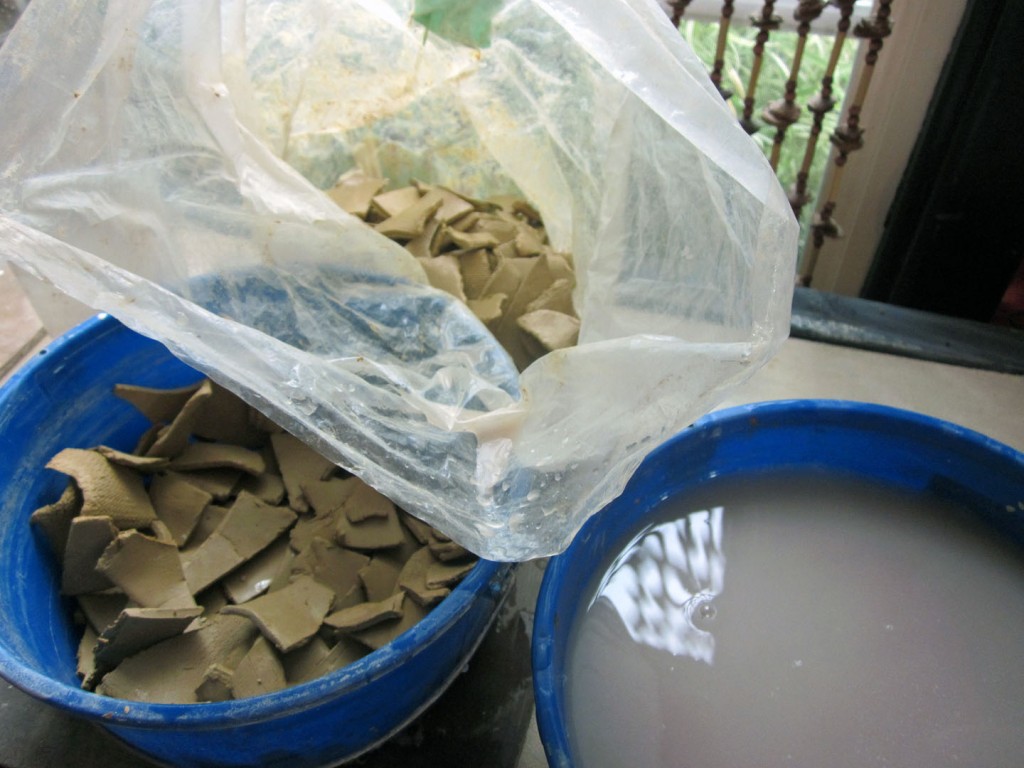
At the end of a studio day, in preparation for the next morning, I dip those chunks – all ranges of wet to dry – handful by handful in water for a few seconds and then into an empty clay bag.
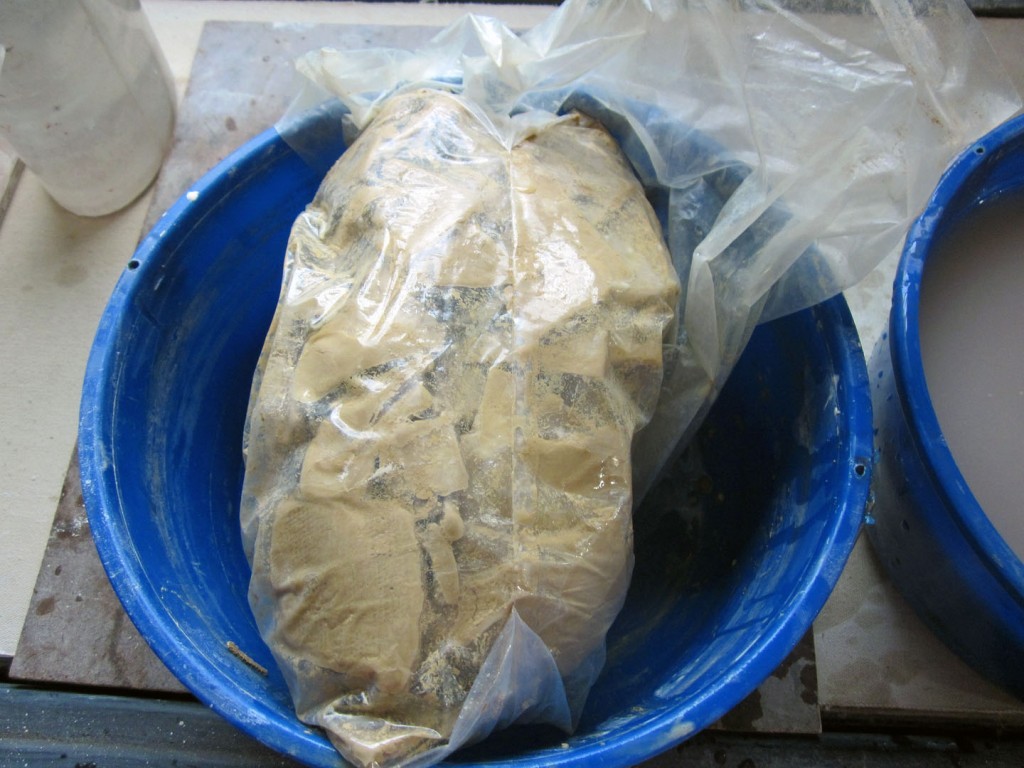
I wrap the bag well and let the scraps absorb the water at least overnight, but they will keep for a long time until I’m ready to reclaim.
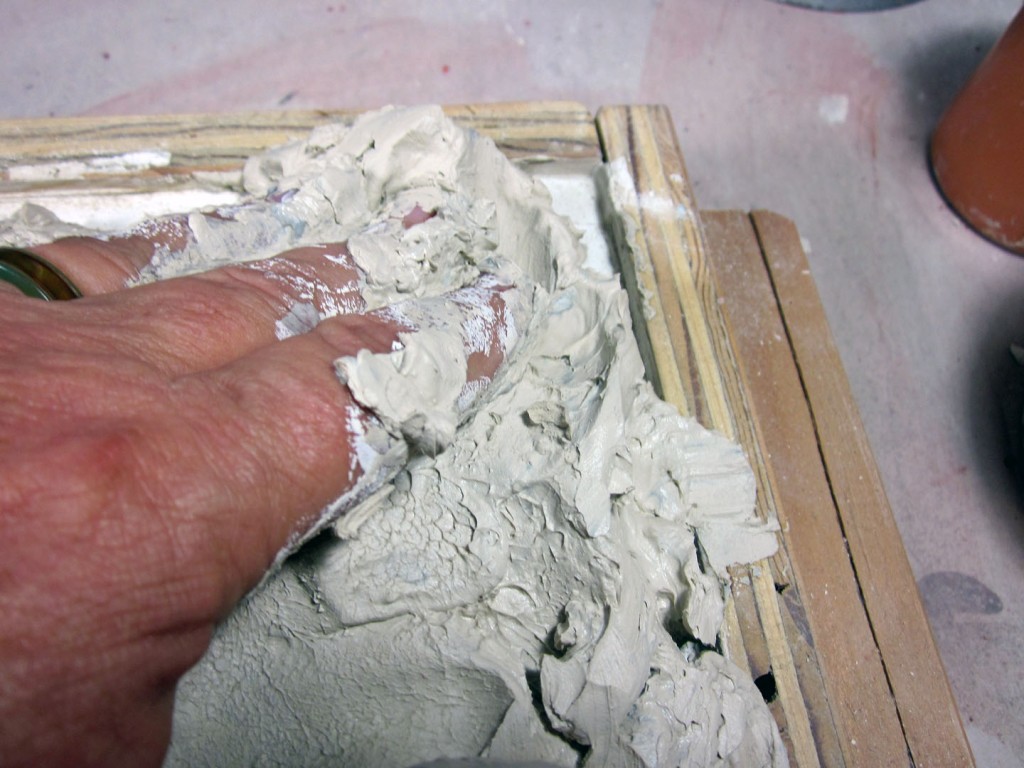
Usually the clay scraps have turned into a slippery-sticky-lumpy goo. I take this out of the bag and spread it as best as I can on a flat rectangular plaster bat. The plaster is a really absorbent surface which will suck the water out of the clay in a matter of hours, but a piece of drywall or wood could work….even canvas, just change it out if it gets too damp before the clay is workable. (Newspaper or paper towels NOT recommended!)
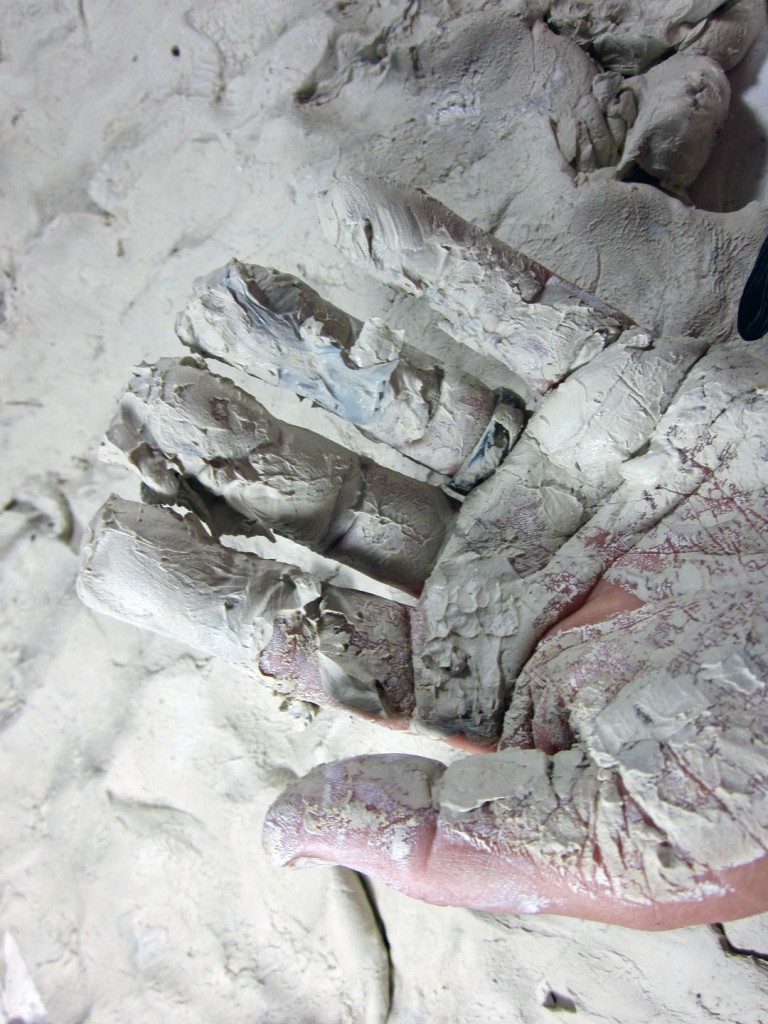
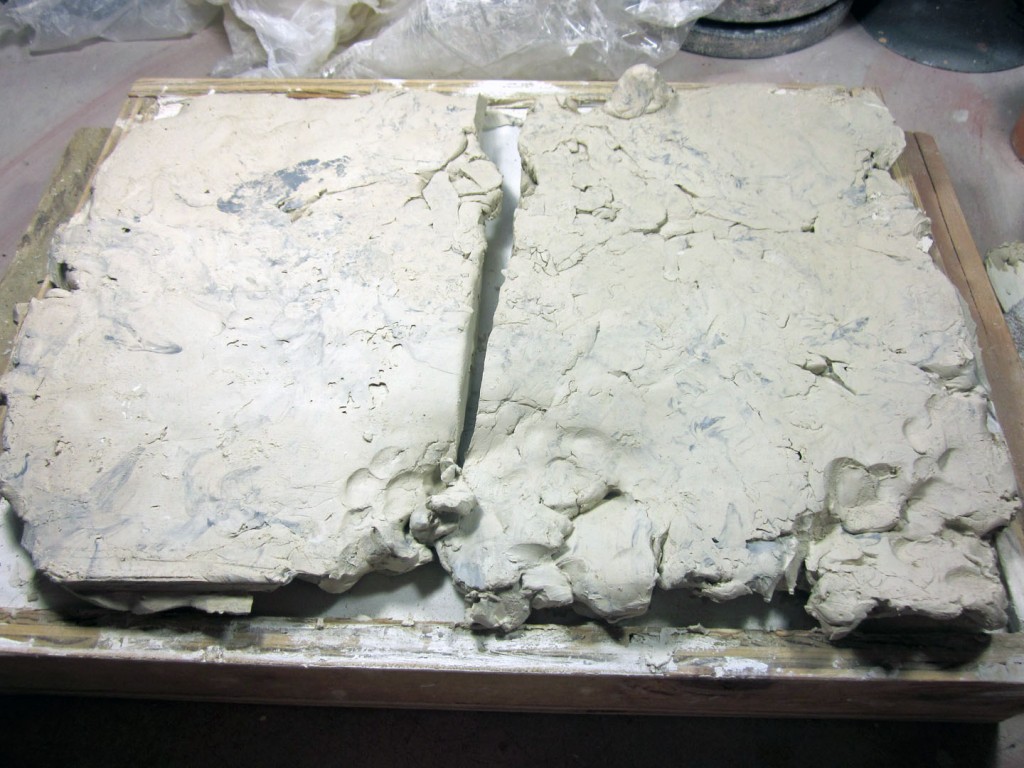
Plaster works great. When the clay pulls away, it’s time to flop it over to the other side for awhile.
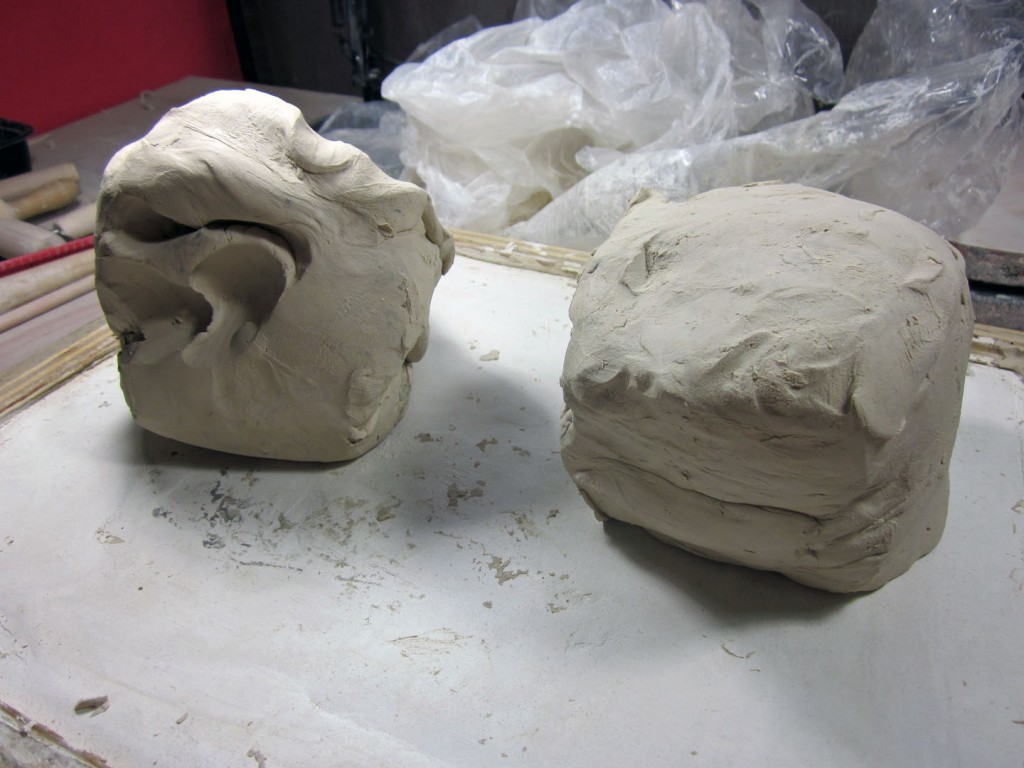
When both sides aren’t sticky, it’s time to ball up the scraps completely and wedge to create as even a texture as possible, in both wetness and consistency. You can throw the lumpy balls onto your wedging surface to compact and condense even further.
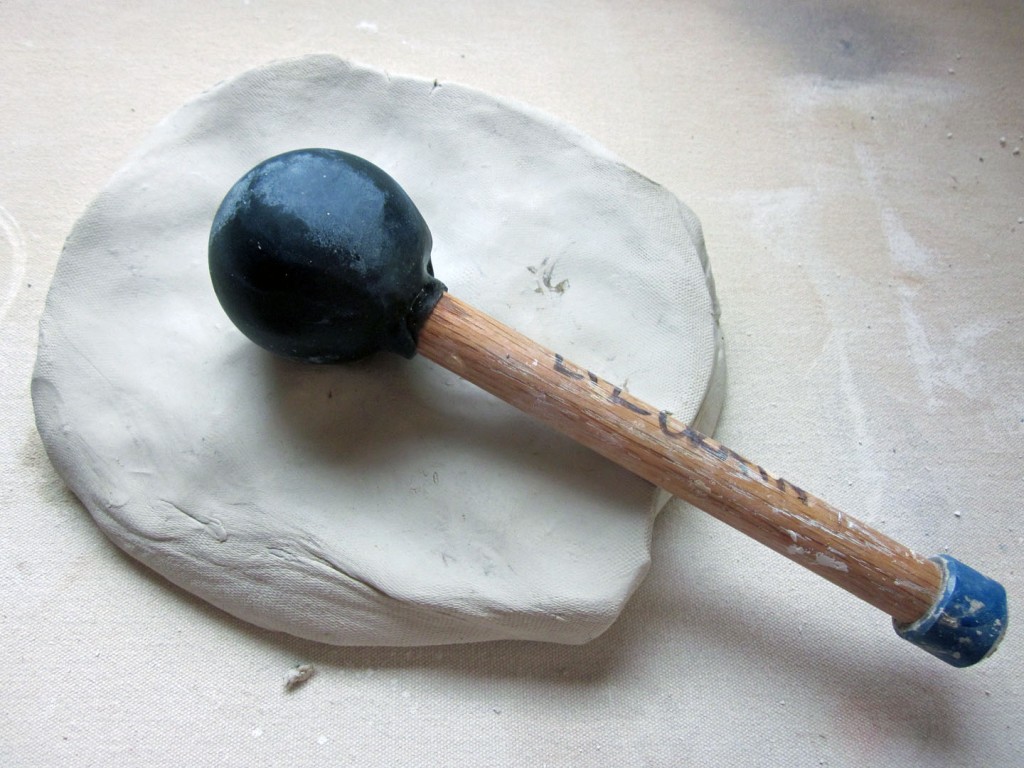
Use your fists or something like this firm-squishy bouncy bonker, and flatten your wedged lumps of clay to pancakes about 2 inches thick.
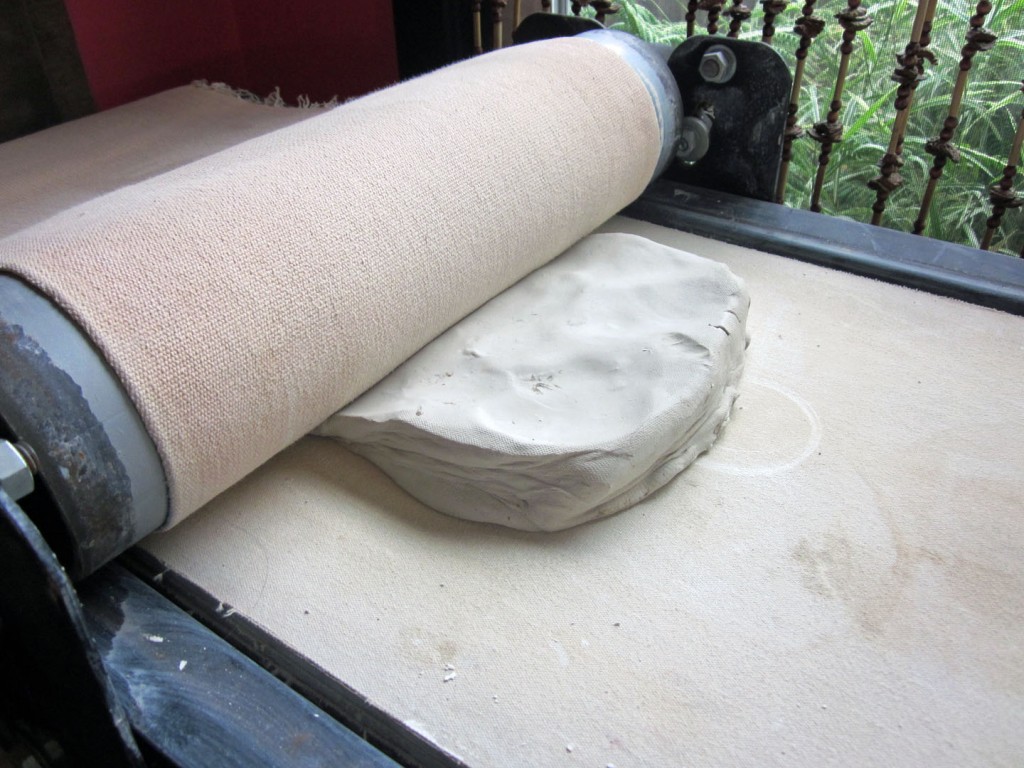
Then using a slab roller or a rolling pin and gauge sticks, roll the thick slabs into thinner ones. Alternatively, you can skid the thick slab along a surface to thin and stretch it by tossing it slightly sideways.
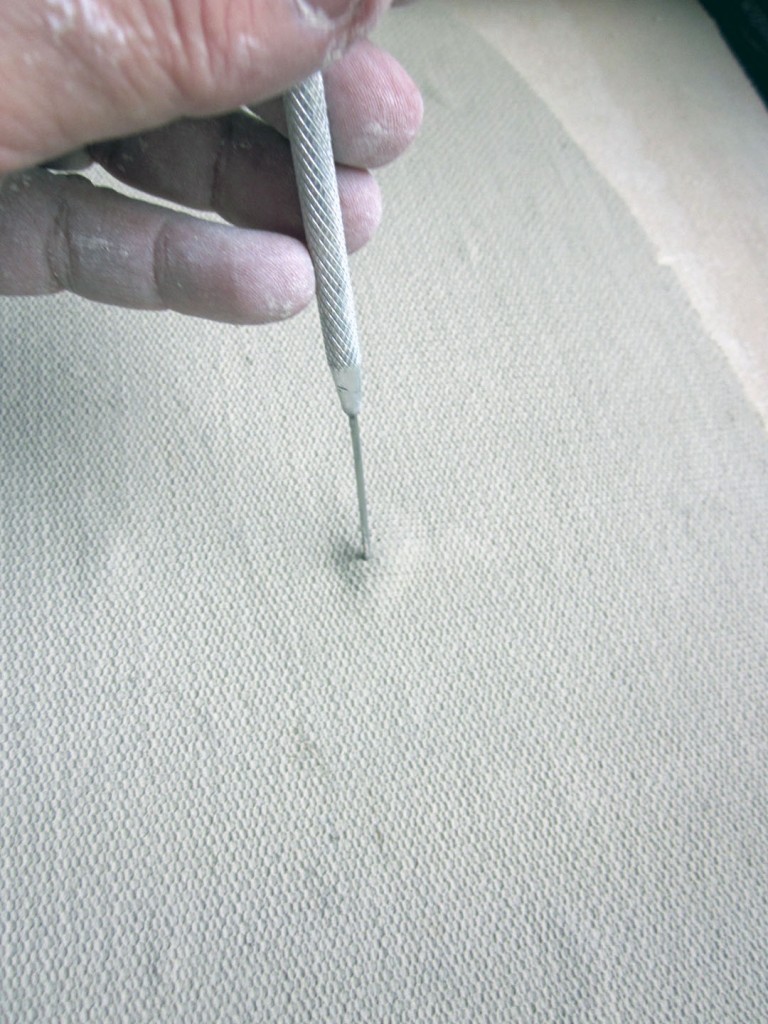
Air bubbles aren’t the bane for hand-building that they are for wheel-throwing, but it’s still nice to remove the obvious ones.
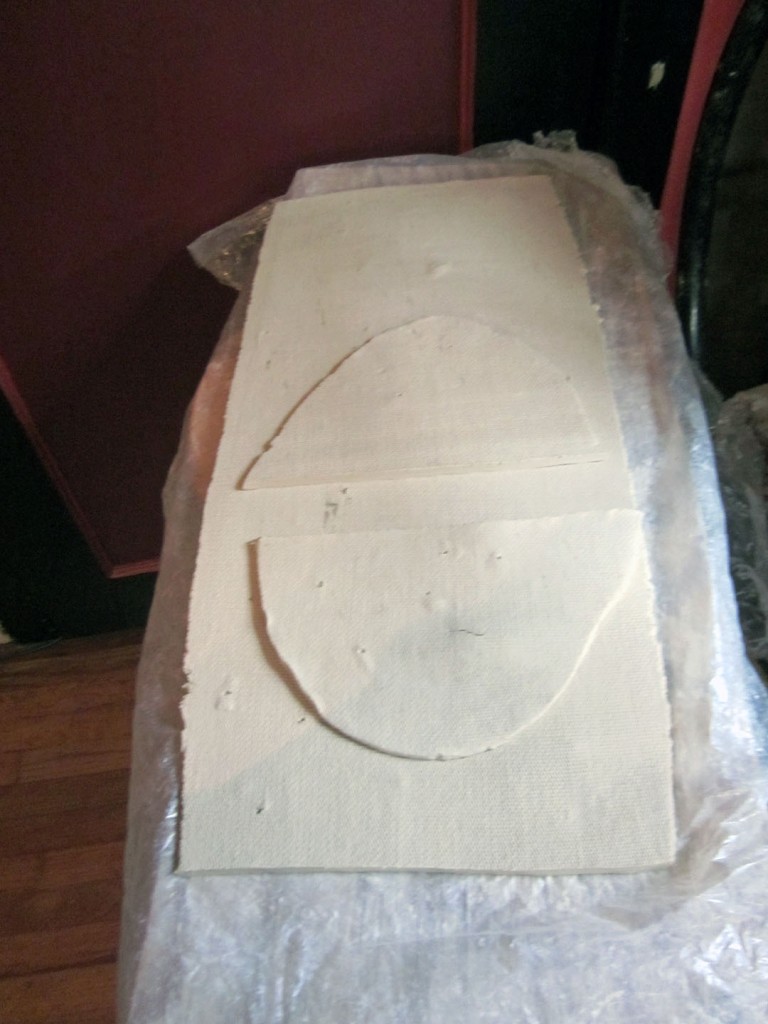
Continue to roll out as thin as you need for your project. I always feel rich to get this much more usable clay out of a bucket of scraps.
And that’s the easy illustrated why and how of getting the most out of your bag of clay! Do it and revel in your own bumper crop.
~Liz Crain, who now pretty much uses ALL of her clay the first time around by keeping scraps workably moist and then either generating all sorts of rolled, textured and cut test tiles and tubes which she bisques and keeps on hand for quicker answers to surface design/glazing possibilities AND/OR she forms the wet pieces back into small balls and makes lovely spontaneous pinched pieces, some of which are keepers, the rest are also testing candidates.
I always reclaim my clay- am a hand builder and a thrower. I knead my clay really well after wedging, this removes all the air bubbles. I reclaim a bucketful at a time to prevent build up… love reclaim, saves so much waste and money!
Hi Jan, I pretty much dislike the whole reclaim process, but the waste and cost motivate me too! Small batches are key for me.
Well, I ‘ve now tried Karen’s technique and love it. No, the clay doesn’t come screaming out of the bag and it was a nicer consistency and easier to wedge and re-use. Thanks for sharing.
Bonnie, love that this works for you! Any little thing that makes it go a little easier, right?
@ Karen – Stepping on the bags? Doesn’t everything just squish out or do you do that when the clay is hard and you want to soften it? I’m also always interested in ways of reclaiming – I have way too many bags and buckets of dry scraps …waiting for my poor wrists to feel up to reclaiming and wedging. Thanks for beginning this dialogue Liz!
Finally had a chance to type my technique of reclaim…(hard to do on a phone 🙂 ) I started doing this while working at a community craft shop. First,I save all the plastic bags my clay comes in, and keep a 5 gallon bucket next to the wheel (covered) to put the trim scraps in. Then, when the bucket is full or when I’ve trimmed a lot of work, I put the scraps back into the bags along with any wet clay from throwing that’s in the splash pan. Squish it together and let set. I check every so often and add more scrap when needed. Step on the bags when necessary. I then wedge up the bags when they feel right to me, add more scrap if needed, set aside and then use. It’s hard to describe my technique as it is unorthodox, but has worked for years for me. I also need to state, I don’t let my scraps dry out all the way, it makes it easier for me to reclaim.
Hi Karen! LOVE this method! The unorthodox is also the efficient: it re-uses those strong clay bags and it lets the clay even out its moisture levels while you do other – more creative – things. No need to start with dry clay this way, as it’s more like a stew you keep bubbling on the back burner, no?
I handbuild and throw and have a RIDICULOUS amount of clay that needs to be reclaimed. I won’t even tell you how much, I’m embarrassed by my laziness. I think that it has to do with hating, haaating, to wedge. Now that I have gotten a bit better at it, and have found my rhythm it’s not so bad; Would I rather not have to do it? Heck yes! (and to be totally honest a bag or two of Babu will awaken the reclaim beast in you, at $25 a bag I am scrounging up every speck of it!) Until I win the lotto, I toss my clay scraps into a bucket, less than 2 gallons, let all those little pieces dry out then add water to cover over night. The next day, or sometimes the next week(hangs head in shame) I blend them up with an immersion blender and then pour them into canvas bags and hang them outside to drip dry. Usually takes about a week or more when it’s damp out, but this produces a beautiful plastic clay that I can wedge right away. I get to avoid the spreading on the plaster gloppy mess!
Yeah, Christine, cost drove me to overcome aversion. LOVE the drip-dry method…may have to try that one!
Oh to be a hand builder and be able to recycle in small chunks! I currently have two 5 gallon buckets of clay glop ready to be processed — and since I need to do what I can to make the recycled clay as uniform as possible with as few air bubbles, I mix the glop with my jiffy mixer and/or immersion blender before spreading it out on the plaster to dry. Works well for me but the mixing step is even messier than the spreading one! Informative and fun to read post as always, Liz.
Almost no getting around messy somewhere in the process, I guess!